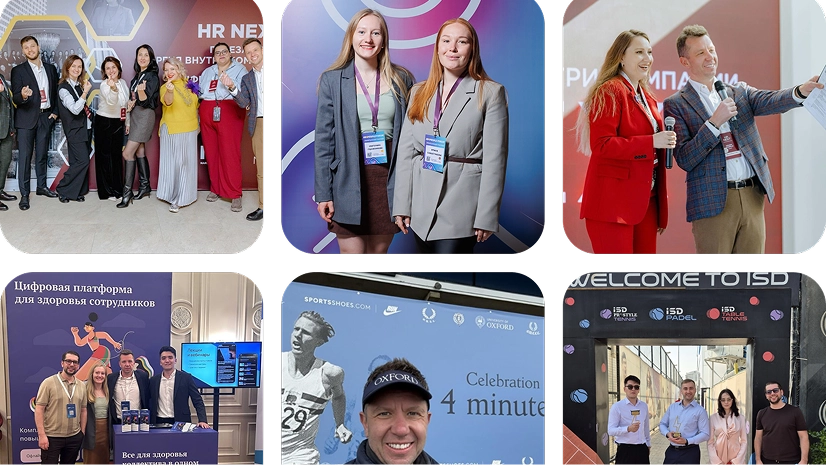Caring Responsibilities Are Surging While Traditional Benefits Lag Behind: Why Modern Workplaces Must Pivot Toward Family-Centric Design
Demographic shifts have converged into a perfect storm for today’s workforce. Birth rates remain volatile, life expectancy climbs, and the “sandwich generation” simultaneously supports toddlers and aging parents. McKinsey’s 2024 Care Report notes that 73 percent of employees provide significant caregiving outside work, up from 57 percent a decade ago. Yet corporate benefit menus often freeze at statutory minimums: a few weeks of paid parental leave, patchy flex-time, and optional employee-assistance hotlines.
The cost of inaction is escalating. Deloitte calculates that caregiver turnover drains up to $35 billion annually from US companies alone through rehiring, onboarding, and lost institutional knowledge. Conversely, enterprises embracing robust caregiver benefits record sharper engagement spikes than those offering unlimited snacks or exotic off-sites. The reason is simple neuroscience: when chronic care worries trigger cortisol surges, prefrontal focus collapses. Freeing cognitive bandwidth through tangible support re-energises creativity and commitment.
This article unpacks the science of caregiver stress, profiles cutting-edge policies—gender-neutral parental leave, back-up childcare, elder-care concierge services—and maps an implementation framework that harmonises equity, legal compliance, and measurable ROI.
The Neurobiology of Caregiver Stress and Its Direct Impact on Cognitive Performance, Immune Health, and Absenteeism
Chronic caregiving activates the hypothalamic-pituitary-adrenal axis more persistently than sporadic acute stress. Elevated cortisol dampens hippocampal memory encoding, impairs executive function, and heightens susceptibility to viral infection by down-regulating lymphocytes. A longitudinal study in Occupational Health Psychology followed 800 working parents; those with insufficient social and workplace support logged 26 percent more sick days over two years and scored lower on problem-solving assessments after poor-sleep nights.
When employers lighten the load—through subsidised daycare slots or paid elder-care leave—studies show a rapid drop in biomarkers of inflammation (CRP levels) and a rebound in heart-rate variability, indicating restored parasympathetic balance. In practical terms, employees return clearer-headed and less prone to presenteeism-driven errors that erode quality.
Expanding Parental Leave From Gendered Perk to Universal Care Platform: How Equal Leave Normalises Shared Responsibility and Closes the Career Stagnation Gap
Traditional maternity-heavy policies inadvertently reinforce gender bias, relegating fathers and non-birthing partners to primary breadwinner roles and penalising female career velocity. Truly inclusive programmes grant equal paid leave—often 16 to 24 weeks—to all parents, whether through birth, adoption, or surrogacy. Spotify’s global 24-week policy, usable flexibly within the first three years, correlates with a 15-percent increase in mothers returning to full-time roles and a near-equal uptake by fathers, signalling cultural change.
Finance leaders initially balk at extended paid leave, but retention math tells a different story. The cost to replace a mid-career engineer ranges from 1.5 to 2× salary; funding several months of leave is cheaper than re-acquiring rare talent. Moreover, equal leave smooths promotion pipelines by reducing gender-skewed absence patterns, balancing leadership succession.
Childcare Support Beyond Stipends: On-Site Micro-Crèches, Pop-Up Day Camps During School Breaks, and Emergency Back-Up Care Networks
Many parents cite the “5 p.m. dread”—the mental toggle between sprinting toward daycare pick-up or finishing a critical code merge. On-site or adjacent childcare removes commute friction and builds psychological safety: children are minutes away, not across town traffic. For distributed teams, companies partner with global networks like Care.com or Bright Horizons to guarantee emergency caregivers within hours, preventing absentee cascades when a nanny calls in sick.
School-age coverage often slips under radar. Pop-up STEM day camps hosted in unused conference rooms during holidays allow parents to maintain flow while kids engage in supervised learning. Employee surveys at semiconductor firm Q-Logic showed a 29-percent rise in “ability to concentrate” scores during summer after launching these camps, compared with previous years marked by fragmented schedules.
Elder-Care and Sandwich-Generation Solutions: Concierge Navigators, Subsidised Adult-Day Programs, and Paid Caregiving Sabbaticals
Elder-care typically surpasses childcare in emotional burden due to medical complexity and unpredictable crises. Forward-thinking organisations contract concierge services that coordinate appointments, vet home-health aides, and negotiate insurance claims, acting as cognitive off-load hubs for employees. Some provide stipends for adult-day centres, mirroring childcare subsidies.
A growing best practice is the caregiving sabbatical: six to eight weeks of partially paid leave usable in blocks to manage parent surgeries or hospice transitions. Pharmaceutical giant HelixBio introduced a 60-day caregiving leave at 70 percent pay; voluntary exit rates among mid-career staff with elder-care duties dropped by 12 percentage points in the subsequent year, preserving high-value scientific expertise.
Flexible Scheduling 2.0: Time-Bank Schemes, Split Shifts, and Output-Based Performance Contracts That Honour Care Windows Without Sacrificing Collaboration
Flexibility once meant remote Fridays; now it demands granular chronology. Time-bank models allocate annual “care hours,” convertible into late-start mornings or mid-day family appointments. Employees work earlier or later—tracked by shared Kanban boards—to balance team deliverables. Split shifts, common in global support, allow parents to handle school runs then resume focused tasks after bedtime, aligning with personal chronotype and global time-zones.
Output-based contracts underpin this freedom. Precise Definition of Done, asynchronous status updates, and documented process governance shield managers from micromanagement temptations and sustain delivery predictability.
Psychological-Safety Anchors: Parent and Caregiver Resource Groups, Therapy Stipends, and Manager Training Against “Flex-Shame”
Policy without culture breeds quiet guilt. Parent and caregiver ERGs offer peer mentoring, knowledge-sharing on local services, and advocacy for inclusive language (e.g., “family hour” instead of “lunch and learn”). Therapy stipends—often separate from medical-insurance deductibles—acknowledge caregiver mental strain and destigmatise professional help.
Managerial training tackles subtle bias: rating someone’s commitment lower because they log off to prepare dinner is flex-shame. Workshops teach outcome-centred feedback and scheduling empathy, reinforcing that visible hours no longer equate to loyalty.
Legal and Compliance Landscape: Harmonising Global Leave Regulations, Data Privacy in Care Platforms, and Non-Discriminatory Benefit Access
Cross-border companies navigate parental-leave entitlements from Sweden’s 480 days to the US federal zero. A standardised baseline policy exceeding the strictest local mandate streamlines messaging and avoids two-tier resentment. Supplementary top-ups apply where statutory pay falls short.
Care platforms process sensitive dependent data; GDPR and HIPAA frameworks dictate encryption, minimal-data capture, and explicit consent. Equity audits ensure part-time and contract employees receive proportionate benefits, preventing legal exposure under equal-treatment laws.
Measuring Return on Care: Linking Benefit Uptake to Engagement, Innovation Velocity, and Financial Performance
Dashboards marry HRIS uptake data with engagement pulses—“I can meet my family responsibilities and be successful at work.” Companies report correlations between high benefit utilisation and Net Promoter Score spikes. Engineering teams where 50 percent of members leverage time-bank flex hours closed sprints 7 percent faster, suggesting cognitive freshness.
Financially, caregiver-friendly insurer BrightSure projects a 1.8× ROI over three years, factoring turnover reduction, decreased absenteeism, and improved employer-brand magnetism that trims recruitment marketing spend.
Implementation Roadmap: Phased Rollout From Listening Sessions to Global Policy Launch Without Operational Whiplash
Begin with anonymous focus groups across caregiving spectra—new parents, elder adoptive carers—to unearth pain points. Pilot parental-leave extensions and back-up care in one region, capturing KPIs and stories. Iterate on budget forecasting, payroll integration, and legal frameworks, then cascade to other geographies alongside manager-training modules.
Communication strategy layers: pre-launch FAQs, town-hall storytelling from leadership fathers and daughters caring for parents, and always-on Slack channels for real-time feedback. Quarterly retrospectives recalibrate benefit caps and vendor service-level agreements, ensuring momentum without overspend.
Future Trajectories: AI-Powered Care-Matching, Portable Care Wallets in Web3, and Urban Micro-Crèche Networks
Machine-learning algorithms will soon match employees with vetted caregivers based on predictive availability, budget, and cultural fit, upgrading static directories. Blockchain-secured “care wallets” store benefit tokens redeemable internationally, aiding nomadic workers. Corporations co-invest in mixed-use developments featuring micro-crèches on the ground floor and co-working labs upstairs, knitting family life directly into the urban work ecosystem.
Ethical safeguards—algorithmic fairness, local-community benefit, and data sovereignty—will define brand trust in this next frontier.
Conclusion: Family-Supportive Policies Transform Compassion Into Competitive Advantage, Turning Care Burdens Into Catalysts for Sustainable Performance
Workforces are not collections of isolated productivity units; they are parents, partners, and adult children encircling loved ones. When organisations shoulder part of that caregiving load through progressive leave, robust childcare scaffolding, and elder-care relief, they liberate cognitive and emotional bandwidth that flows back into innovation, service quality, and brand loyalty.
Caregiver-centric workplaces rewrite the social contract: employees exchange discretionary effort for employer empathy, not just paychecks. Companies that embed such empathy into policy and culture will attract multi-generational talent, weather demographic turbulence, and stand out in markets where purpose and people converge as decisive factors of success.

What is the level of wellbeing in your team?
 Take the survey
Take the surveyWellbeing course for HR specialists
.png) Subscribe
Subscribe.png)
.png)
.png)




.png)
.png)





